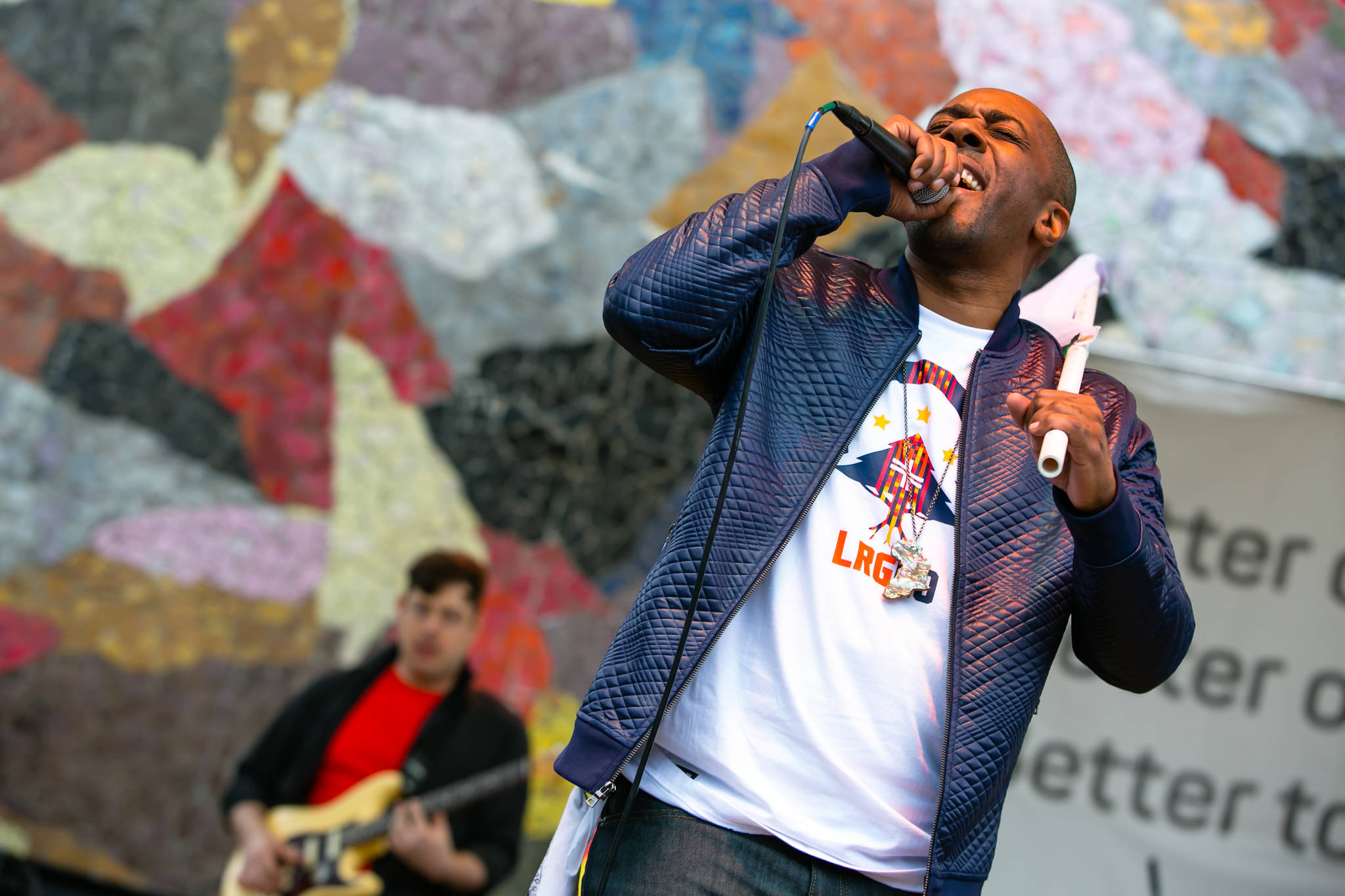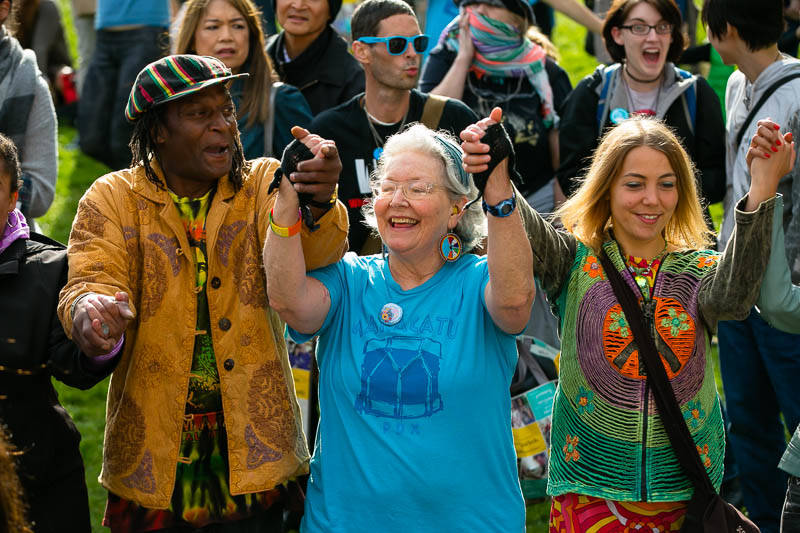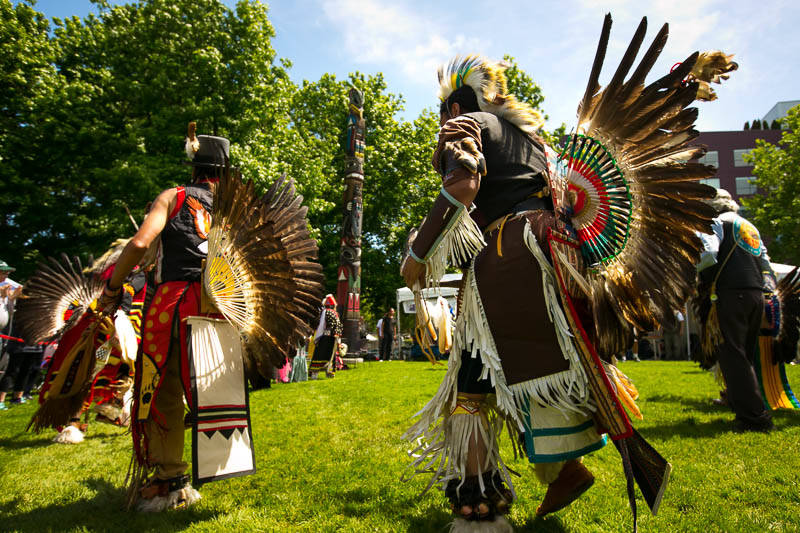Since 1972 Northwest Folklife has been putting community on stage, showcasing the traditional and ethnic artistry that is practiced by every kind of people found throughout the region. That is a broad palate and it gets broader every year, swelling now to fill a four-day festival that attracts 250,000 visitors and features more than 5,000 performers. In the last 20 years—we’ll call it the modern era—the festival has actively sought out communities that are emergent and under-represented while also offering a platform for modern artists who are preserving more well-known folk traditions and pushing the idea of folk into new territory. As a result, the festival is a reflection of the world around it, it’s every-changing programming a barometer for the culture of the city it is at the center of. Here are four moments from the last 20 years that stand out.
1997 – Pete Seeger Takes Over
It was only natural that the organizers of Folklife had tried for some time to book Pete Seeger, one of America’s greatest proponents of folk music. In 1997, the stars aligned. Seeger was scheduled to speak at a labor conference at the University of Washington and said he would parlay his engagement into a weekend of performances at Seattle Center, so long as organizers would equip him with a labor chorus. On May 23, Seeger opened the festivities at Seattle Center’s Flag Plaza. “The words of Chief Seattle have gone around the world,” he said before performing “This Little Light of Mine” alongside grandson Tao Rodriguez-Seeger. “And the example of this festival is gonna spread around the world too.” Seeger would go on to perform multiple times throughout the weekend. The most memorable performance, though, was at the Mural Amphitheater, where the folk legend was joined by a large labor chorus that didn’t even exist two months prior. “The folk process is something that has been going on for ages,” Seeger said while introducing a labor-friendly rendition of Jester Hairston’s “Amen.” “For thousands of years people have been taking old tunes and putting new words to them.”
1998 – Mexican Diversity Goes On Display
As the 20th century came to a close, there were more than 200,000 Hispanics living in the state of Washington, many of them with Mexican heritage. Exploring the great diversity of this heritage and inviting the artists who carry it forth was the aim of the Folklife program Norte Y Sur, Un Solo Pueblo, which translates as North and South, One People. Organizers invited artists from throughout the state of Washington for a vibrant weekend that included exhibits; a play about the “Day of the Dead”; a low-rider parade; a big dance; and Mexicano, Chicano, and Tejano music, much of it from east of the Cascades. There were also a handful of notable groups from Mexico, each of whom showed off a different style of regional song most often heard at weddings and parties. The performances were all captured with audio and turned into an album, which was released two years later, and prompted Seattle Times reporter Paul de Barros to call Norte Y Sur “the best focus program Folklife ever produced.”
2004 – Ethiopians and Eritreans Come Together
It was less than four years after the end of the Eritrean-Ethiopian War when Folklife invited artists from both East African nations to take part—along with artists from Somalia, Djbouti, and Sudan—in the Horn of Africa cultural focus in 2004. The heart of the programming was in the Pavilion, where members of the communities were able to show traditional Ethiopian and Eritrean lifestyles, from huts to hair braiding, and, of course, the food. But it was on stage that musicians, poets, and dancers from Ethiopia and Eritrea, especially, were able to express and share their cultures with curioius fest-goers and each other. “It was a challenge,” recalls Yeggy Michael, a Seattle-based Eritrean artist who helped organize the event and designed the Folklife poster for 2004. “The two countries had just come out of war and people were a little bit, to each other, weren’t that friendly, but Folklife brought the cultures, really in an amazing way, together. The total vibe was totally turned different and people were really happy.”
2015 – Hip-Hop Takes Center Stage
Hip-hop had long been a part of Folklife, and not only in the hip-hop programming that came online in the ’90s. The roots of hip-hop can be found in many of the traditions long-celebrated by the festival. In 2015, organizers decided to expose those roots with a weekend of programming that explored Seattle’s vibrant hip-hop scene, as well as the traditions that have fed it, from African and Latin traditional dance to the blues and gospel to jazz and politically minded songwriting. The purest expression of the these connections was found in a Saturday afternoon performance by Dumi Maraire Jr., the son of a celebrated marimba musician who incorporates his family’s Zimbabwean roots into the hip-hop he produces as Draze. In his performance, Draze used the materials that have come before to help tell the story of the world around him; in particular, on the song “Ain’t the Same,” he addresses the gentrification that has pushed the black community out of Seattle’s Central District. It’s a kind of folk songcraft the now-late Pete Seeger could appreciate.
The 46th Annual Northwest Folklife Festival takes place May 26-29 at Seattle Center. For a full schedule, click here.






